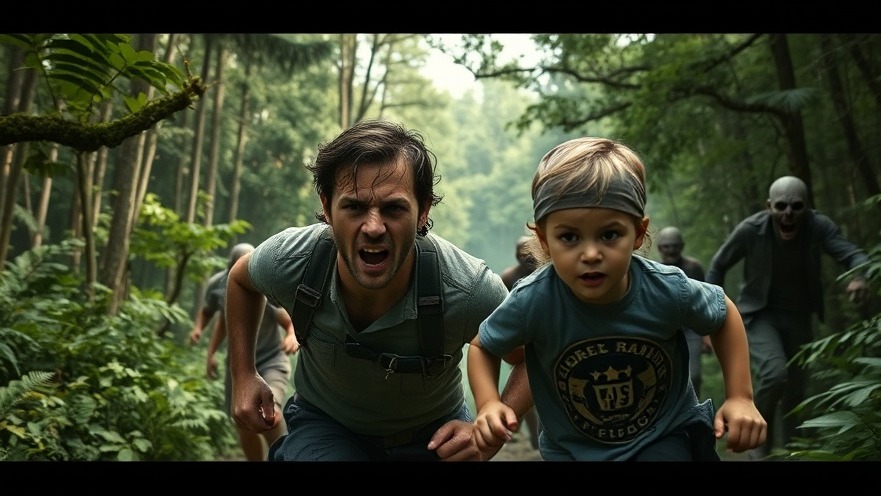
A Classic Franchise Revived: The Return to the Zombie World
In the landscape of horror cinema, only a handful of films have managed to create a lasting impact as powerfully as the early 2000s hits 28 Days Later and 28 Weeks Later. These movies not only defined the modern zombie genre but also redefined how we perceive human endurance against the backdrop of a post-apocalyptic world. With the announcement of a new sequel, 28 Years Later, fans are thrilled to see the original creative duo, director Danny Boyle and writer Alex Garland, return to the scene.
Plot Insights: A New Generation Faces the Aftermath
The narrative picks up nearly three decades after the events of the previous films, wherein the infamous rage virus has been contained within the borders of the UK. Viewers are introduced to Jamie (Aaron Taylor-Johnson), his ailing wife Isla (Jodie Comer), and their inquisitive son Spike (Alfie Williams). With Isla's mysterious illness and the looming question of survival, the family embarks on a harrowing journey to the mainland where they hope to find a remedy.
A Bold Narrative Choice: Pacing and Emotional Depth
One of the significant shifts in 28 Years Later is its deliberate pacing. For the first 90 minutes, the film meanders through moments of tension and minimal zombie encounters, a stark contrast to the high-speed chaos of its predecessors. Boyle's approach to storytelling here focuses on the emotional stakes and the evolution of this family against an unforgiving world. Although many die-hard fans might crave the frantic thrills, it's crucial to appreciate the depth Boyle has chosen to explore.
The Evolution of Horror: Zombie Evolution and Storytelling
As the franchise has progressed, so too have the zombies themselves. In this latest installment, the undead no longer conform to the typical zombie archetype. They have developed unique features and capabilities tailored to their environment, making them even more unpredictable and alarming. This evolution is not just for shock value; it raises questions about the nature of human survival and adaptation when faced with unprecedented challenges.
Humanity's Dark Side: Echoes of Colonel Kurtz
An intriguing subplot includes a lone survivor, portrayed sinisterly by Ralph Fiennes, who embodies the darkness humanity can descend into in desperate circumstances. This character draws parallels to Conrad's iconic character, Colonel Kurtz, from Apocalypse Now, inviting viewers to reflect deeply on morality amidst chaos.
Future Predictions: Where Can This Franchise Go?
With 28 Years Later setting the stage for potential sequels, it leaves audiences pondering where this expansive universe might lead. Will the story continue to concentrate on the family dynamics set against a zombie-infested landscape, or is there a deeper existential commentary waiting to surface? The possibilities are both thrilling and daunting.
A Final Thought: Beyond the Gripping Horror
As we await more content from this revitalized franchise, it is essential to discuss its broader implications about living in crisis and fragmentation. While 28 Years Later may not deliver everything fans anticipate, it gracefully ponders emotional connections in a world filled with despair, a reminder that sometimes, humanity’s struggle is as gripping as the monsters in the shadows.
Ultimately, this sequel offers a fresh lens through which to observe the horrors we create and endure—with a warm reminder of what it means to care for those we love, even amidst chaos.
If you’re excited about exploring the nuances of films like 28 Years Later and want to stay updated on local entertainment that encapsulates the Austin spirit, follow our magazine for updates and features as thrilling as the films we discuss.
 Add Element
Add Element  Add Row
Add Row 



 Add Row
Add Row  Add
Add 


Write A Comment